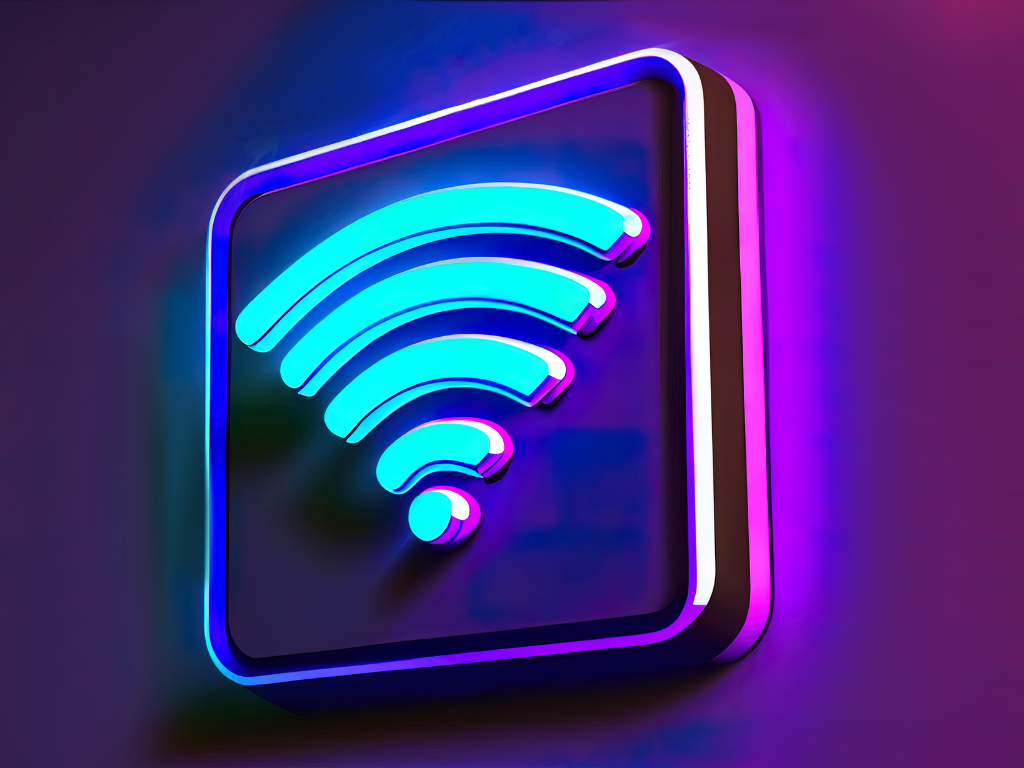Every few years, a new wireless standard comes along and promises faster speeds, better stability, and a smoother experience. But Wi-Fi 7 is different. It isn’t just an upgrade, it’s a reset button for what campus networks can do. Schools, colleges, and enterprises are already preparing for applications that demand more bandwidth and ultra-low latency, from AR lab sessions to real-time collaboration tools and high-density IoT systems. Students notice the change too. More devices connect to classroom networks than ever before: tablets, laptops, sensors, smart boards, VR headsets, lab hardware, attendance tools the list keeps growing. Wi-Fi 6 did a good job holding everything together, but Wi-Fi 7 takes things to a level where digital learning actually feels instant.
For anyone studying networking or planning an IT career, understanding how Wi-Fi 7 works isn’t optional anymore. It’s becoming part of the foundation of modern infrastructure. Before long, the schools upgrading their networks today will be looking for IT professionals who can design, secure, and optimize these next-generation systems.
So, let’s break down what makes Wi-Fi 7 such a big deal, why campuses are excited about it, and what skills students should be building right now.
What Wi-Fi 7 Actually Is (And Why It’s a Big Step Forward)?
Before getting into speed charts and new features, it helps to understand what Wi-Fi 7 represents. This standard (officially IEEE 802.11be) isn’t designed for small improvements. It was built for extremely high-throughput environments with hundreds or even thousands of connected devices that all need stable, fast access simultaneously.
Unlike earlier Wi-Fi upgrades that focused mostly on raw speed, Wi-Fi 7 focuses equally on:
- Capacity
- Reliability
- Latency
- Efficiency
- Intelligent traffic handling
The more digital classrooms become, the more these factors matter.
A Network Built for Big Demands
Most classrooms used to rely on simple tasks like browsing the web, watching videos, or submitting assignments. Now they handle:
- Live digital quizzes
- Remote labs
- VR simulations
- Immersive science lessons
- Large cloud-based projects
- Multi-device classrooms where every student connects with at least two or three devices
That’s why Wi-Fi 7 is such a massive shift. It brings improvements that directly support the way students learn now and the way they’ll work in the future.
Speed Isn’t Just Speed Anymore
Wi-Fi 7’s maximum theoretical speed is up to 46 Gbps. That’s not just faster, it’s several times higher than Wi-Fi 6’s 9.6 Gbps.
But here’s the real difference: Wi-Fi 7 isn’t just about throwing more data across a network. It helps multiple devices maintain top-tier performance at the same time, even in crowded lecture halls, libraries, labs, and dorms.
Speed matters, but stability + capacity + consistency matter even more. Wi-Fi 7 improves all three.
Why Wi-Fi 7 Arrives at the Perfect Time for Campuses?
Wi-Fi 7 couldn’t be showing up at a better moment for schools and universities. Classrooms have shifted from simple browsing and video playback to high-demand digital environments filled with cloud tools, AR/VR lessons, interactive boards, tablets, laptops, and a rising number of IoT devices. Even after hybrid learning faded, the expectations for fast, reliable connectivity stayed. Students now rely on networks that can handle real-time collaboration, instant file sharing, seamless video sessions, and immersive learning without delay. Meanwhile, campuses are supporting more than student devices; everything from security cameras and smart doors to environmental sensors and lab equipment runs on Wi-Fi. With this surge in density and demand, older standards can’t keep up. Wi-Fi 7 brings the speed, stability, and low-latency performance that modern classrooms require, making it the right upgrade at exactly the right time.
Breaking Down Wi-Fi 7’s Core Features (And Why They Matter for Students)
Wi-Fi 7 isn’t just a faster version of Wi-Fi 6 it’s a completely upgraded architecture built for a world where wireless networks power almost everything. To understand why this matters for IT students, we need to look at its three biggest features: faster throughput, Multi-Link Operation, and spectrum puncturing. Each one blends raw performance with practical improvements that make real campuses run smoother.
Faster Throughput: Speed Built for Heavy Workloads
Wi-Fi 7’s theoretical top speed up to 46 Gbps is a massive leap from Wi-Fi 6’s 9.6 Gbps. Even though real-world speeds will be lower, the jump is big enough to change what campuses can do wirelessly. The secret lies in two upgrades: 320 MHz channels and 4K QAM. The wider channels act like bigger digital highways, allowing more data to move in parallel, especially in the 6 GHz band. Meanwhile, 4K QAM packs more information into every signal. For students, this translates into faster downloads, smoother streaming, and higher quality video calls even during peak hours. For IT teams, it means fewer bottlenecks, easier network planning, and improved stability in high-density spaces like auditoriums, labs, or lecture theatres.
Multi-Link Operation: One Device, Multiple Lanes
If Wi-Fi 7 had a signature feature, this would be it. Multi-Link Operation, or MLO, gives devices the ability to use more than one band at the same time. Think of it as allowing a device to drive on multiple roads simultaneously instead of just one. The benefits are immediate: higher speeds through aggregated bandwidth, fewer connection drops when switching bands, and dramatically lower latency for real-time applications. This is essential for AR/VR simulations, high-resolution streaming, and cloud-based labs. For IT students, MLO is a concept worth mastering early, because it reshapes how network performance is analyzed, especially in environments where hundreds of devices are competing for airtime.
Spectrum Puncturing: Smart Efficiency in Crowded Airwaves
Older Wi-Fi standards had a frustrating limitation: if a part of a wide channel faced interference, the entire channel became unusable. Wi-Fi 7 fixes that with spectrum puncturing, which allows the network to block only the noisy portion and continue using the rest. This matters more than most people realise. Campuses sit in crowded urban areas where interference from nearby buildings, devices, and networks is constant. Spectrum puncturing ensures the network stays fast and stable even when the airwaves aren’t perfect. For IT learners, understanding this mechanism helps with diagnosing performance issues that older Wi-Fi versions couldn’t handle gracefully.
Together, these features turn Wi-Fi 7 into a foundation for high-performance, low-latency wireless environments, exactly the kind modern campuses now depend on.
How Wi-Fi 7 Changes Campus Networks in Real Life?
It’s easy to focus on the technical specs, but the real story lies in how Wi-Fi 7 transforms day-to-day operations in schools, colleges, and universities. Campuses today rely heavily on wireless connectivity: smart classrooms, digital exams, IoT-powered security systems, streaming-heavy coursework, and cloud-based learning tools. Wi-Fi 7 brings improvements that impact all of them.
Smarter Classrooms With No Lag
Modern classrooms often run dozens of connected devices at once tablets, laptops, smart whiteboards, projectors, sensors, and broadcasting equipment. With Wi-Fi 7, everything reacts faster because the bandwidth can finally keep up with the load. Interactive displays respond instantly, teachers can switch between tools without frozen screens, and students can access cloud content without buffering. The combination of low latency and higher throughput makes technology feel invisible, which is exactly how digital classrooms should function.
Support for AR, VR, and 8K Learning Tools
AR and VR lessons struggle on older networks because they demand extremely low latency. Wi-Fi 7’s multi-link capabilities and wider channels solve this problem. Students can participate in virtual labs, simulations, and immersive field trips without stutter or nausea-inducing delays. The same applies to 8K streaming, something increasingly used in medical, engineering, and design programs. These advancements bring practical, hands-on learning within reach without heavy hardware requirements.
IoT-Driven Campuses Get a Stability Boost
A typical modern campus includes thousands of devices: security cameras, environmental sensors, smart lighting, access control systems, vending machines, door sensors, printers, projectors, and more. Wi-Fi 7’s ability to support dense environments means these systems can run simultaneously without interruptions. Spectrum puncturing also helps prevent large drop-offs in reliability when interference hits a common issue in older wireless networks.
Real-Time Collaboration and Remote Access Become Smoother
Students and faculty rely on tools like cloud IDEs, video calls, online labs, collaborative documents, and remote desktops. Wi-Fi 7’s higher stability and throughput create a wired-like feel for these tasks. Large file transfers happen almost instantly. Video calls stay clear, even with dozens of people online. Cloud-based software loads as smoothly as a local application. This shift plays a huge role in modern education where hybrid learning is here to stay.
Simply put, Wi-Fi 7 transforms campuses from “Wi-Fi dependent” to “Wi-Fi empowered.” It gives every digital tool the performance it needs to feel effortless.
The Skills IT Students Need to Master for the Wi-Fi 7 Era
As networks move toward Wi-Fi 7, the bar for IT skills rises too. Students entering networking, cybersecurity, or systems roles will need a deeper understanding of wireless environments than ever before. The first area is advanced RF theory, understanding how signals behave, how interference spreads, and how wide-channel technologies like 320 MHz operate. These fundamentals guide everything from troubleshooting to designing high-capacity networks. The next skill set involves network design and planning, including site surveys, capacity planning, and the ability to map out high-density environments using tools like Ekahau. Because Wi-Fi 7 relies on smarter, more complex systems, security knowledge becomes equally important. Students must understand WPA3 setups, encryption, authentication methods, and how to segment networks that serve different user groups and thousands of IoT devices.
Beyond fundamentals, the era of Wi-Fi 7 demands skills in automation and AI-driven network optimization. Modern networks are too complex to manage manually, so IT teams use scripting, AI-powered monitoring, and automation tools to control traffic, detect issues proactively, and maintain performance. A strong grasp of Python, network APIs, and automation platforms will become a major differentiator for job seekers. Yet, none of this replaces traditional networking knowledge. Students still need a solid foundation in TCP/IP, VLANs, routing, QoS, DHCP, and switching because Wi-Fi infrastructure relies heavily on these layers. Finally, earning vendor certifications like CCNA, ACMA, or future Wi-Fi-7-specific credentials will help validate these skills and help students stand out in a competitive job market. Together, these capabilities prepare learners to manage the next generation of wireless environments confidently.
Why Wi-Fi 7 Arrives at the Perfect Time for Campuses?
Campuses have reached a point where older wireless standards simply can’t keep up. Every year brings more devices, more bandwidth-heavy tools, and more reliance on cloud platforms. Even something as simple as a first-year lecture can involve hundreds of students streaming content, accessing digital materials, joining collaborative platforms, or running virtual tools simultaneously. Wi-Fi 7 arrives right when these demands have outgrown what Wi-Fi 5 and Wi-Fi 6 can reliably handle. The jump in throughput, efficiency, and latency makes it possible for campuses to run everything from automated IoT systems to immersive labs without overloading the network. As hybrid learning becomes a long-term reality and campuses shift toward smarter, sensor-driven environments, Wi-Fi 7 provides the stability, scale, and responsiveness needed to support modern education. It’s not just an upgrade, it’s a timely solution to a real and growing problem.
What This Shift Means for IT Careers?
The rollout of Wi-Fi 7 creates new expectations for anyone entering the networking or systems field. Wireless networks aren’t “plug-and-play” anymore; they’re built around real-time optimization, advanced radio behaviour, and multi-band management. IT roles now demand people who can design wireless environments that support thousands of devices, troubleshoot issues across multiple layers, and secure high-density networks. Students who understand Wi-Fi 7 concepts will be better prepared for modern job roles ranging from network engineering and wireless design to cybersecurity and cloud integration. The standard also pushes IT teams toward automation, AI-assisted network tuning, and proactive diagnostics. These skills are becoming core expectations across industries not just education, but healthcare, retail, finance, and manufacturing. Learning Wi-Fi 7 now gives IT students a head start in a job market that increasingly values people who can manage complex, distributed, high-performance wireless environments.
Conclusion: Wi-Fi 7 Marks a New Era of Wireless Learning
Wi-Fi 7 isn’t just faster Wi-Fi. It’s a shift in how wireless networks behave, how devices connect, and how campuses deliver digital learning. With features like Multi-Link Operation, 320 MHz channels, 4K QAM, and spectrum puncturing, it’s built for the kind of heavy workloads schools carry every day. Classrooms feel smoother, AR/VR lessons run without lag, IoT networks stay stable, and collaboration tools finally get the reliability students expect. For IT learners, this is a defining moment. Understanding Wi-Fi 7’s architecture, radio behaviour, security requirements, and automation tools will shape how they approach networking roles in the years ahead. The standard is rolling out at a time when campuses need better performance, and students need better training. It bridges both gaps at once.
The future of campus networking is wireless, distributed, and deeply intelligent and Wi-Fi 7 is the backbone that will support it. IT students who master it now will be ready for a career where next-generation networks become the new normal.
FAQs:
1. Will older devices work on Wi-Fi 7 networks?
Yes. Wi-Fi 7 routers are backward compatible, but older devices won’t benefit from new features like MLO or 4K QAM.
2. Does Wi-Fi 7 improve battery life on student devices?
In many cases, yes. Faster data transfers mean radios stay active for shorter periods, which can reduce power usage.
3. Will campuses need to replace all access points to adopt Wi-Fi 7?
Most likely. Wi-Fi 7 requires new hardware, especially to support 6 GHz bands and wider channels.
4. Is Wi-Fi 7 useful for small classrooms or only large universities?
Both. Even small institutions benefit from lower latency, improved stability, and better device handling.
5. How long will it take for Wi-Fi 7 to become the standard in education?
Adoption will be gradual over the next 2–4 years as campuses upgrade infrastructure and more devices support the new standard.






